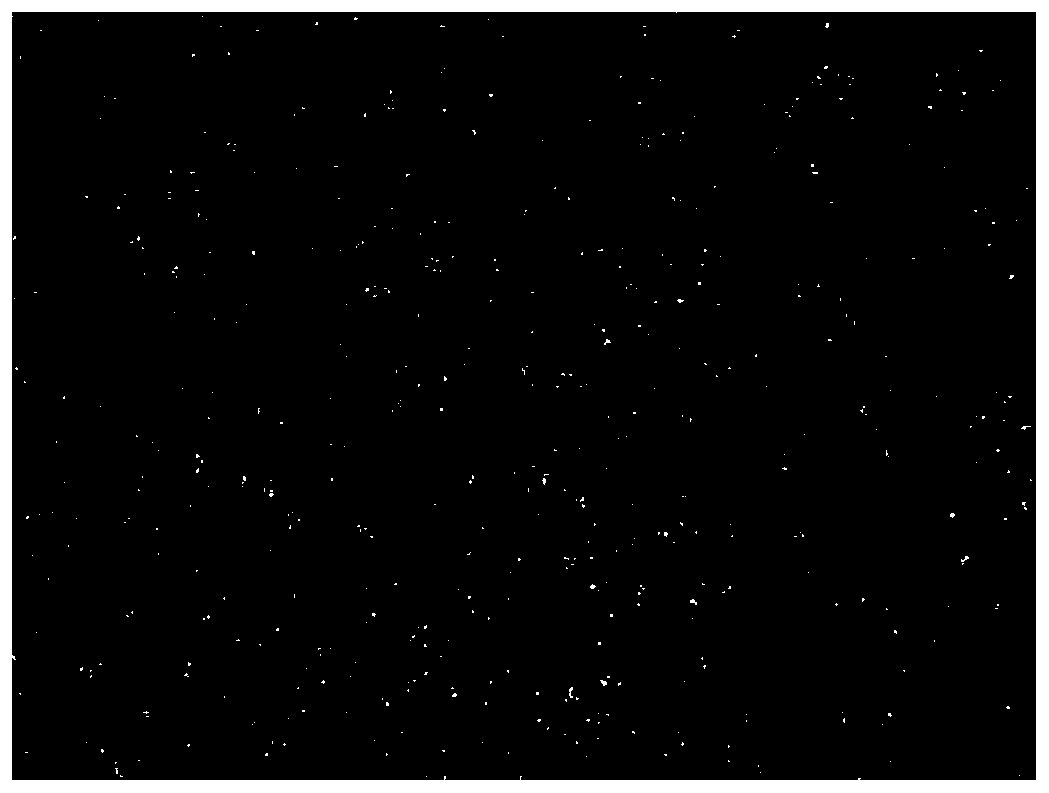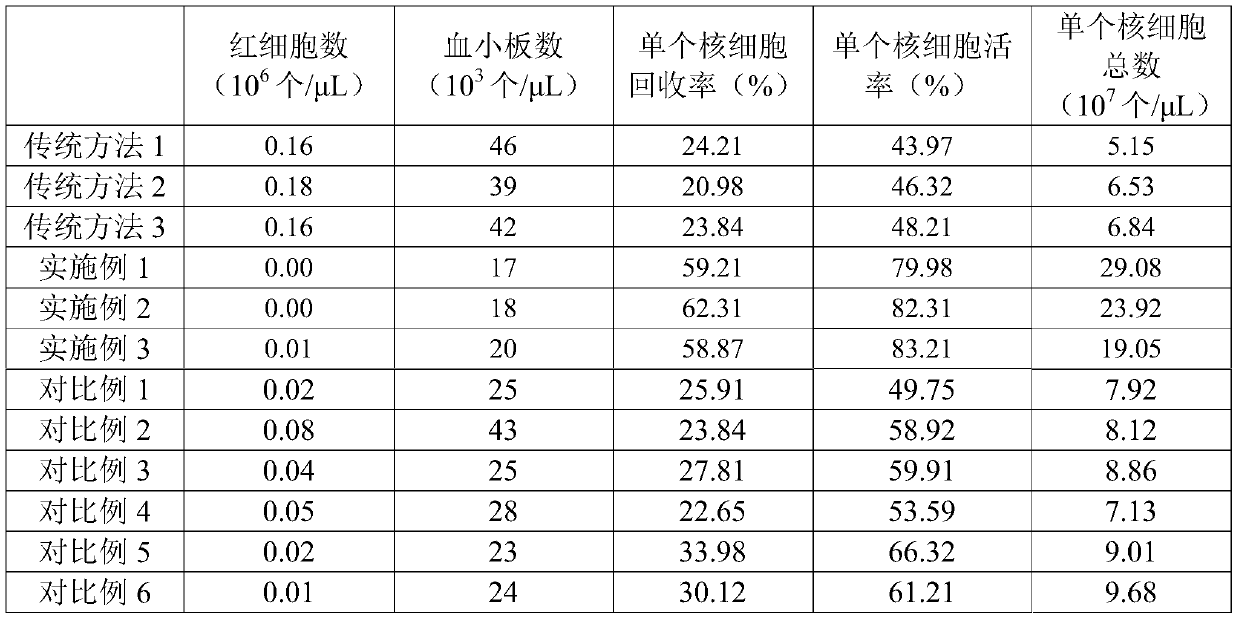Separation method of PBMCs (peripheral blood mononuclear cells)
A separation method and peripheral blood technology, applied in the field of regenerative medicine, can solve the problems of low yield and low activity, and achieve the effect of large quantity and high activity
- Summary
- Abstract
- Description
- Claims
- Application Information
AI Technical Summary
Problems solved by technology
Method used
Image
Examples
Embodiment 1
[0026] A method for isolating peripheral blood mononuclear cells, comprising the following steps:
[0027] 1) Peripheral blood collection: 70mL of human peripheral blood will be extracted and placed in a sodium heparin blood collection tube. After the collection is completed, the sodium heparin blood collection tube will be placed in a sealed sterile transport bottle for refrigerated transportation at a temperature of 4-8°C;
[0028] 2) Pretreatment: After the peripheral blood arrives in the laboratory, the experimenters operate in a sterile environment, put the heparin sodium blood collection tube in the centrifuge for centrifugation, the centrifugation speed is 1800rpm, the time is 10min, the rising speed is 7 and the falling speed is 10min. 1. Separate the upper layer of blood and the lower layer of blood cells; extract the upper layer of plasma for storage, transfer the lower layer of blood cells to a 100mL transfer bag, add hydroxyethyl starch, the volume ratio of the lowe...
Embodiment 2
[0032] A method for isolating peripheral blood mononuclear cells, comprising the following steps:
[0033] 1) Peripheral blood collection: 70mL of human peripheral blood will be extracted and placed in a sodium heparin blood collection tube. After the collection is completed, the sodium heparin blood collection tube will be placed in a sealed sterile transport bottle for refrigerated transportation at a temperature of 4-8°C;
[0034] 2) Pretreatment: After the peripheral blood arrives in the laboratory, the experimenter operates in a sterile environment, puts the heparin sodium blood collection tube in a centrifuge and centrifuges at a speed of 1700 rpm for 12 minutes to separate the upper blood and lower blood cells; Extract the upper layer of plasma for storage, transfer the lower layer of blood cells to a 100mL transfer bag, add hydroxyethyl starch, the volume ratio of the lower layer of blood cells to the hydroxyethyl starch solution is 3:1, mix well, settle for 65 minutes,...
Embodiment 3
[0038] A method for isolating peripheral blood mononuclear cells, comprising the following steps:
[0039] 1) Peripheral blood collection: 70mL of human peripheral blood will be extracted and placed in a sodium heparin blood collection tube. After the collection is completed, the sodium heparin blood collection tube will be placed in a sealed sterile transport bottle for refrigerated transportation at a temperature of 4-8°C;
[0040] 2) Pretreatment: After the peripheral blood arrives in the laboratory, the experimenter operates in a sterile environment, puts the heparin sodium blood collection tube in a centrifuge and centrifuges at a speed of 1900 rpm for 8 minutes to separate the upper blood and lower blood cells; Extract the upper layer of plasma for storage, transfer the lower layer of blood cells to a 100mL transfer bag, add hydroxyethyl starch, the volume ratio of the lower layer of blood cells to the hydroxyethyl starch solution is 3:1, mix well, settle for 65 minutes, an...
PUM
 Login to View More
Login to View More Abstract
Description
Claims
Application Information
 Login to View More
Login to View More - R&D
- Intellectual Property
- Life Sciences
- Materials
- Tech Scout
- Unparalleled Data Quality
- Higher Quality Content
- 60% Fewer Hallucinations
Browse by: Latest US Patents, China's latest patents, Technical Efficacy Thesaurus, Application Domain, Technology Topic, Popular Technical Reports.
© 2025 PatSnap. All rights reserved.Legal|Privacy policy|Modern Slavery Act Transparency Statement|Sitemap|About US| Contact US: help@patsnap.com


